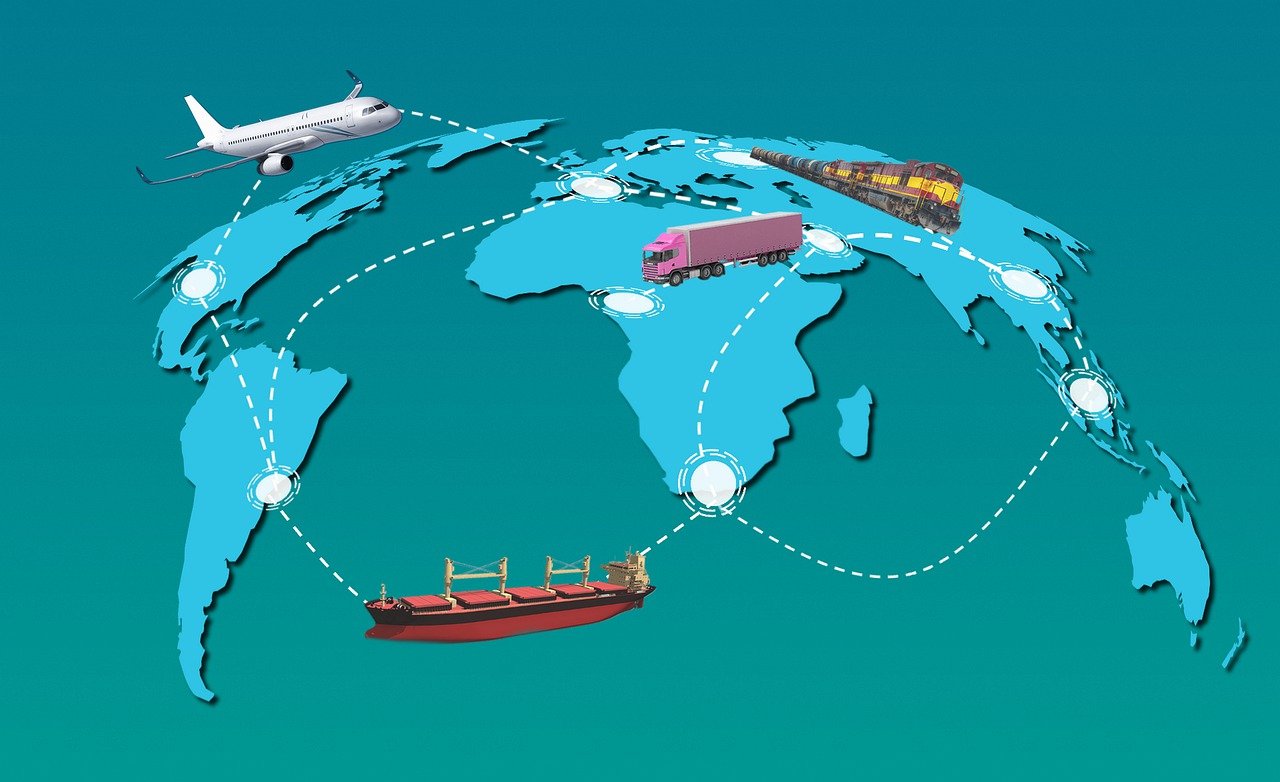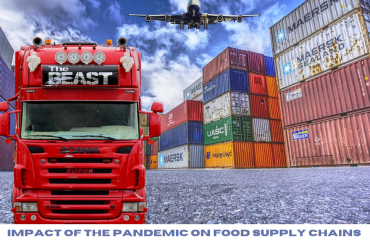The pandemic had a significant impact on global economy with many industries experiencing drastic decline in demand and business revenue. However, the pharmaceutical enterprises, with a zeal to find fastest-cure-first, along with multiplying demand across healthcare treatments triumphed during the crisis.
According to a report by Fortune Business Insights, the global pharmaceuticals market was valued at USD 1,500 billion in 2021 and is projected to grow to USD 2,400 billion by 2029, exhibiting a CAGR of 6.1% during the period.
The expected business opportunity provoked a surge in R&D spend and expansion of manufacturing capabilities. While the big pharma giants focused on finding solutions to the core diseases, the small and medium enterprises targeted small but niche opportunities to gain momentum.
The Risk
While it’s very easy to consider the pharma sector ‘lucky,’ we can’t forget that such a global crisis disrupt entire business models and their value chains. For example, who would imagine that manufacturing lines would come to a standstill due to non-availability of manpower; who could believe that batch after batch of GMP production would have to be quarantined due to risk of exposure to virus infected employees; or, getting a flight booking for material transfer would feel like scrambling for a ticket to Mars; not to forget the 10 to 15 days quarantine period to clear cold chain shipments from airports. How about the risk of derailing clinical trials for not being able to reach patients and delivering the repeat doses on-time.
In an era when just-in-time is the guiding spirit, supply chain teams had to explore every possible opportunity to sneak additional batches in manufacturing plans to build months-on-hand inventory. To aggravate the situation further, an average lead time for completing one pharma manufacturing cycle from raw material production to finished goods inventory (RM > API > DP > FG) can easily be over 12 months. Despite having no visibility on sales projection, the management had to approve steep increase in manufacturing budgets even at a risk of having to dispose entire production lots if not used within the approved stability period at a later stage.
The increased inventory forecast surged demand for cold storage warehouses across the globe. The sector which is predominantly buyer driven saw companies running from pillar to post to contract for whatever additional GDP space available and at any premium demanded by service providers.
Most importantly, on one hand, supply chain executives were firefighting immediate concerns to keep businesses afloat and, on the other hand, they worked aggressively to assess expected changes in geopolitical situations which could collapse entire supply chain operations. There was a strategic rush to find ways of mitigating risk by expanding manufacturing, storage and distribution networks to safe geopolitical zones for maintaining business continuity under any circumstances.
The Mitigation Plan
Following are some of the ways in which successful pharma companies mitigated supply chain risk transforming global crisis into a business opportunity:
- Supply chain teams prioritized network optimization over landed cost reduction to ensure a continuous and uninterrupted product supply across the value chain.
- Leaders gave high preference to continuous risk assessment. The executives led crisis response teams whose sole task was to review the supply chain risks and derive mitigation plans for immediate resolution.
- A detailed supplier risk assessment was conducted for tier 1 and tier 2 suppliers with some organizations extending to tier 3 suppliers. The teams built the trust of contract manufacturing organizations (CMO’s) by providing longer-term forecasts and signing master service agreements with volume commitments. This helped CMO’s have business visibility who in-turn could provide volume commitments to tier 3 and 4 raw material and component suppliers.
- Supply chain teams built excess capacity by targeting dual sourcing, and geographic diversification. They added additional supply chain nodes to get production closer to end markets or in lower-risk countries that are less subject to disruption.
- Organizations enhanced workforce agility by allowing employees to work remotely wherever feasible. The industry was quick to accommodate web based collaborative platforms and signing tools like Sharepoint, Google Drive, DocuSign etc to maintain documentation accuracy and traceability with strict compliance to GMP standards.
- The logistics challenges were overcome by prioritizing speed and security over cost. There was high emphasis on documentation accuracy to avoid customs and FDA holds which ensured timely shipment delivery and helped meet planned production schedules.
- Quality assessment processes for site validations, batch approvals and vendor qualifications were simplified by allowing remote monitoring and quality audits along with faster adoption of electronic batch records.
The Resilient Future
While the results of the above initiatives have been positive for the industry, there is still a vast scope for improvement in operational efficiency. Historically, the pharmaceutical industry has been slow to accommodate new technologies to respond to changing times. The right balance of new technology implementation with old compliance parameters holds great promise for the operational future of the industry. A few initiatives to consider could include:
- Automation: Currently, the production of starting raw materials and active pharma ingredients requires a lot of manual intervention to comply with GMP norms. This became a big bottleneck during the pandemic when employees had to undergo frequent tests before entering the GMP production area. Despite testing, there were instances when employees developed symptoms later which resulted in temporary hold in production lines to verify potential risk to the entire batch. This delayed the manufacturing steps and impacted upcoming production schedule. The future should bring a lot of in-process checks and analytical samplings that could be done by using mobile robots. Aerial drones and cameras could also be used to oversee the manufacturing progress without entering the quarantine area
- Blockchain: Traditional supply chains often involve multiple intermediaries, manual record-keeping, and time-consuming reconciliations. With blockchain, companies could document production updates to a single shared ledger, which provides complete data visibility and a single source of truth. This would reduce time required to verify the analytical batch records and also expedite the quality review and batch approval process. Blockchain can also be used to compile data on shipping movements, determine faster shipping routes and produce contracts that are transparent and hold all parties accountable. While implementation of blockchain technology in pharma manufacturing requires careful consideration of various factors such as regulatory compliance, data privacy, and security, the future should bring a lot of transparency and efficiency if we succeed.
- Standardization: Cold chain packaging is a fast-growing niche segment and a crucial part of pharma logistics operations. With air-freight being the predominant mode for transporting life-saving pharmaceuticals (over 75% pharma cargo moves by air), the demand for active and passive shippers is increasing exponentially year-after-year. Unlike Sea-freight where the cargo movement is standardized in 20’/ 40’ containers, there is no uniformity in cold chain box sizes. Every manufacturer tries to develop their own unique selling proposition by trying to promote a specialized unit. Unfortunately, this creates confusion in trade on most efficient unit size for the movement. The future should unite cold shipper packaging industry to finalize standard dimensions of manufacturing active and passive shipping boxes. While we would still need multiple shipper variants considering varied size of pharma shipments, the standardization of box sizes would increase awareness on the type of box appropriate for shipments and, also reduce unnecessary waste in pharma movements. Further, as temperature monitoring is a mandatory requirement for pharma shipments, the cold boxes could come with inbuilt monitoring and tracking solutions.
- Internet of Things (IoT): IoT can be used to connect entire manufacturing and distribution networks to exchange real time data to improve supply chain visibility and enhance operational effectiveness. It can be used to supervise different unit operations, track material in transit or identify risk during clinical trials. In future, the use of IoT can assist in better inventory controls and reduced costs.
- Artificial Intelligence (AI): The biggest challenge for Pharma industry is data integration as we still work in silos with minimal information sharing within the value chain. If only we can change this and promote data-centric approach allowing required information to be accessed across all channels, the AI tools can come to play and in future be useful to collate enormous data to help in forecasting demand, optimizing production, process automation, increasing shipments visibility and, reducing costly expedites thereby improving overall supply chain efficiency.
Conclusion
Pharmaceutical industry has shown great resilience to overcome major crisis with robust and quantitative analysis of the situation and prioritization of risk-response based on criticality. The strict regulatory guidelines also ensured quality, consistency, and safety in development, manufacturing, and distribution of medicines.
The companies embracing digital transformation and supply chain innovation will be better equipped to navigate business challenges faster. By leveraging advanced technologies, collaborating across the enterprise, and focusing on longer-term outcomes, the industry can drive growth, increase efficiency, and improve resiliency.
As the pharma industry continues to evolve, it’s essential for supply chain leaders to stay ahead of the curve and remain agile in the face of change.
About ScaleUp Inc
ScaleUp Inc is a boutique management consulting firm with global operations spread across US, Canada, EU, and India. We have a history of solving global business problems and delivering great results for Fortune 500 and leading companies across a broad range of industries. Know more about us here.
About Amar Shelar
Amar is a Senior Consultant at ScaleUp Inc and has more than 24 years’ experience in Global Logistics & Supply Chain Management. He had managed end to end supply chain in diverse industries like Pharmaceuticals, Energy, Infrastructure & Telecom. He has also worked extensively in Shipping & 3PL industry which gives a complete overview of worldwide logistics operations. Amar helps in designing effective logistics solutions by considering the specific complexities and unique supply chain requirements of the client and its industry.





